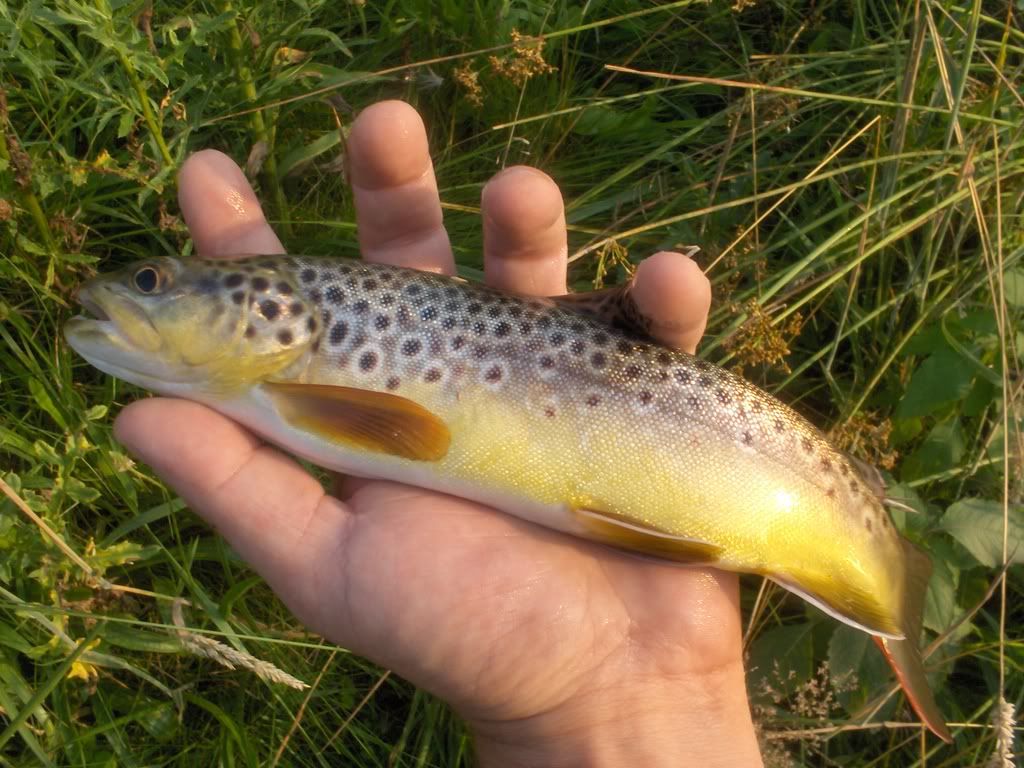I catch a few wilds with no red.
It's an indicator, as most stockers don't and most wild fish have some red. But it's far from being telling evidence, there are numerous exceptions on both sides.
Same is true of all of the other indicators. Red adipose, eye spot, sharp vs. frayed fins, clarity of the fins, etc. Even location. None of them are slam dunks on their own, but they're all valid indicators. The best you can do is take them all into account. If they all say stocked, or even almost all of them, well, 99% of the time the fish is gonna be stocked. If they all say wild, 99% of the time that fish is wild. But you're still left with a few odd balls who have some indicators each way, and you can still guess, but you're going to be less sure of your guess. That's where I'm at with the OP's fish.
Spot pattern, opague fins, and frayed fins of a stocker. Blue eye spot, red adipose, deep gold color of a wild. Location doesn't help either way, both are possible in the water.
My call is still holdover, but I'm not real sure of it.






